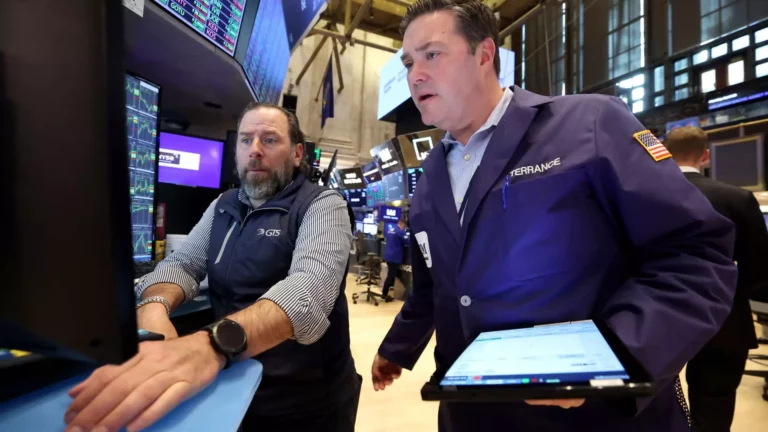The Future of Cash: Rethinking Short-Term Investments Amid Economic Shifts

In an era where financial markets are constantly evolving, Americans’ enduring attachment to cash may pose significant long-term risks to their capital growth. Wells Fargo, a key player in banking and investment strategies, has suggested that individuals might need to reconsider their heavy reliance on cash-equivalent vehicles—namely money markets and high-yield savings accounts. This pivotal advice arises against the backdrop of historical highs in money market fund investments, which total a staggering $6.42 trillion as reported recently by the Investment Company Institute.
As the Federal Reserve charts a course of interest rate reductions, the captivating yields that have enticed investors may soon become a distant memory. Currently, the yield on primary money market funds stands at 4.75%, a drop from previous highs. Historical data shows that the allure of these funds peaked in November 2023, with yields reaching up to 5.2%, marking the best performance since tracking began in 2006. This situation underscores a crucial timing issue; as money market returns take longer to adjust to monetary policy changes, investors face a predicament: continuing to keep funds in cash without tapping into potentially more lucrative alternatives.
One of the most critical risks associated with cash-based investments is what experts refer to as “cash drag.” This term highlights the lost opportunity for investors who leave substantial amounts of money sitting idle in short-term cash vehicles. Michelle Wan, a global investment strategist at Wells Fargo, emphasizes the importance of assessing cash allocations in the context of long-term growth. Her analysis indicates that the returns on investments relying heavily on cash instruments lag significantly behind those of more aggressive asset classes.
To illustrate this point, a comparison conducted by the institution highlights a $1 million investment from as early as 1926. While small-cap equities yielded an impressive growth to $62 billion, the conservative choice of 1-3 month Treasury bills saw only a trivial escalation to $24 million over nearly a century. Conversely, the stock market remains historically more productive—a trend that indicates the potential pitfalls of clinging to cash.
Given these insights, Wan advocates a diversified investment approach rather than succumbing to the temptation of chasing higher rates of return via riskier assets. A well-rounded strategy, she posits, can balance growth potential with safety, particularly for investors with a clear set of long-term goals. Historically, the S&P 500 index has experienced more considerable downturns than diversified portfolios, reinforcing the importance of asset allocation.
Investors are encouraged to reassess their return expectations and risk tolerance, weighing the viability of implementing dollar-cost averaging strategies that spread investments over time across various asset classes. By doing so, they can participate in market fluctuations more effectively, reducing risks associated with concentrated investments in a declining yield environment.
Late-Stage Strategies for Fixed-Income Allocations
As shifts in interest rates continue, Wells Fargo has pinpointed high-yield bonds as a suitable alternative for temporarily placed funds. Yet, given their recent price escalations, the bank advises caution and recommends leveraging market pullbacks to adjust investment portfolios. Brian Rehling, head of global fixed income strategy at Wells Fargo, notes that intermediate-term taxable fixed income investments present a promising option amidst changing landscapes. He regards these maturities as a “compromise,” providing a balance between diminishing yields on shorter maturities and the inherent risks associated with long-term investments.
As the economic landscape shifts and the Federal Reserve navigates changes in interest rates, Americans must scrutinize their reliance on cash-based investments. While these vehicles may seem secure, they carry inherent risks that can jeopardize long-term financial goals. Embracing diversification and understanding market dynamics will empower investors to make suitable decisions in accordance with their unique risk profiles. The future of investing is not merely about safeguarding assets; it’s about maximizing potential growth through informed choices and strategic financial planning. Rethinking cash allocation and identifying higher-performing alternatives can pave the way toward favorable, sustainable financial outcomes for years to come.





